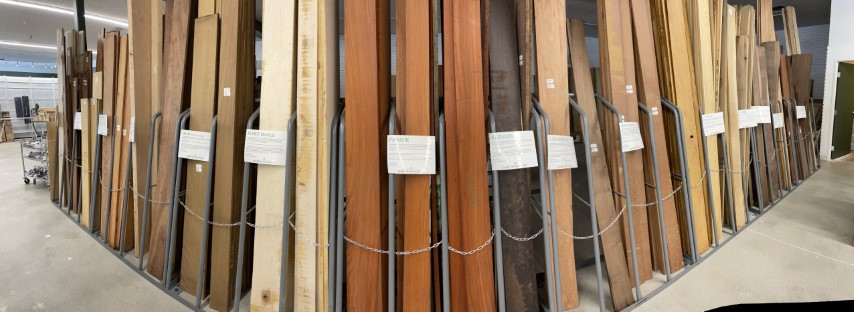 We use the best materials available. All board materials are based on local availability.
We use the best materials available. All board materials are based on local availability.
Examples:
CANARYWOOD
Color/Appearance: Heartwood color can vary a fair amount, from a pale yellow-orange to a darker reddish brown, usually with darker streaks throughout. Pale yellow sapwood is sharply demarcated from heartwood. Color tends to darken and homogenize with age.
South America (from Panama down to southern Brazil)
MACACAUBA
Central and South America
Color/Appearance: Heartwood color can vary a fair amount, from a pale yellow-orange to a darker reddish brown, usually with darker streaks throughout. Pale yellow sapwood is sharply demarcated from heartwood. Color tends to darken and homogenize with age
BLOODWOOD
Color/Appearance: Heartwood is a bright, vivid red. Color can darken to a darker brownish red over time with exposure to light. Applying a thick protective finish, and keeping the wood out of direct sunlight can help slow this color shift. Well defined sapwood is a pale yellowish color, though given the typically large trunk diameters, it’s seldom seen or included in imported lumber.
Tropical South America
RED OAK
Northeastern United States and Southeastern Canada
Color/Appearance: Heartwood is a light to medium brown, commonly with a reddish cast. Paler sapwood is not always sharply demarcated from the heartwood. Quartersawn sections display prominent ray fleck patterns (see images below). White oak (Quercus alba) tends to have a slightly more olive cast (as opposed to red), but color alone isn’t always a reliable method of determining the type of oak.
CHAKTE VIGA
Tropical areas of Mexico and Central America
Color/Appearance: Heartwood bright orange to golden brown. Sapwood pale white to yellow.
GONCALO ALVES (Jobillo)
From Mexico southward to Brazil
Color/Appearance: Heartwood is typically a medium reddish brown with irregularly spaced streaks of dark brown to black. Color tends to darken with age.

